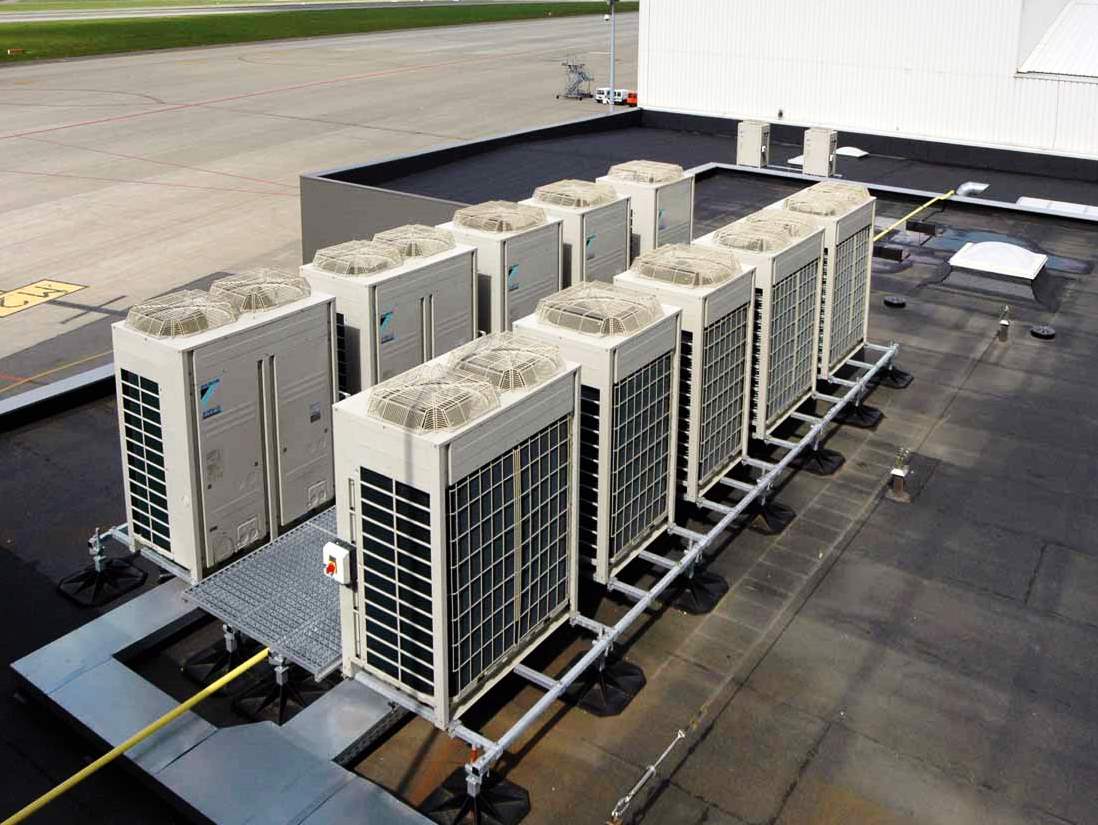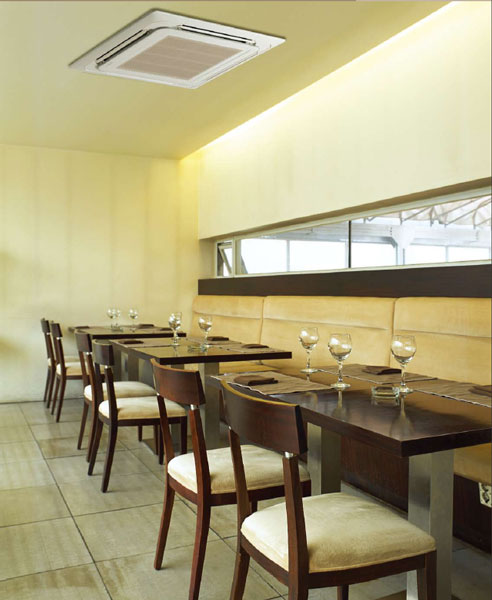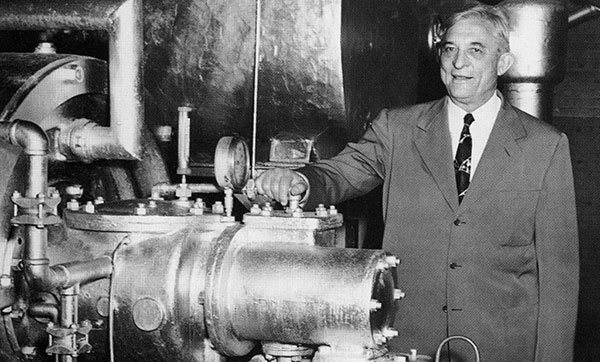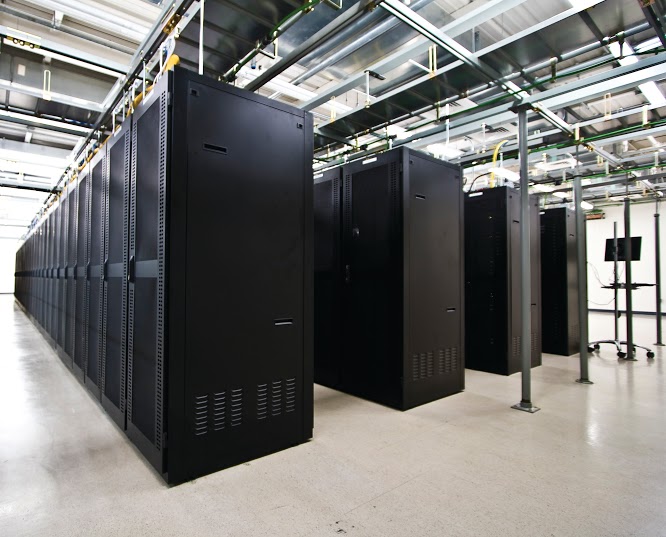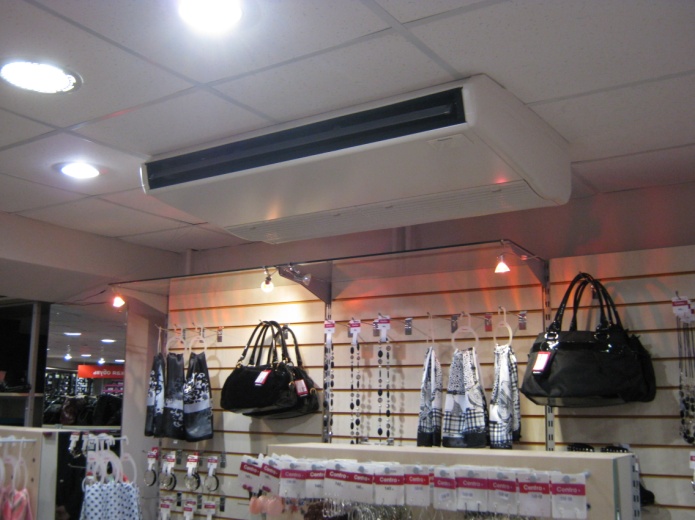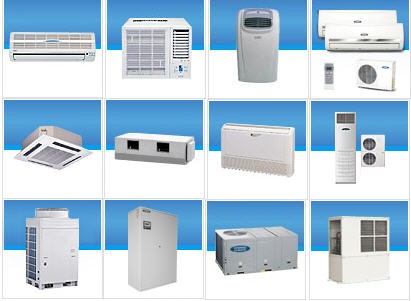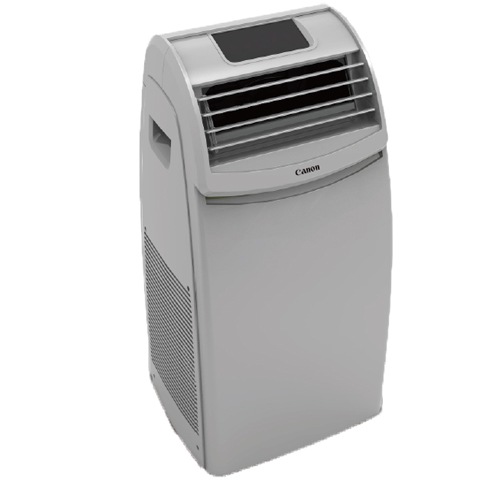The widespread installation of plastic windows in residential and office buildings has led to the fact that fresh air has practically ceased to flow into the premises. The lack of natural ventilation leads to a supersaturation of carbon dioxide, which, in conditions of a lack of oxygen, can adversely affect the well-being of people. You can improve the quality of the air by installing an air conditioner with forced ventilation for an apartment or a split system that can provide a forced supply of fresh air.
- Types of supply air conditioners
- Membrane
- Modular system
- Modification of the outdoor unit of the air conditioner
- Split systems with supply ventilation function
- The device and principle of operation of a recirculating channel air conditioner
- Duct split system with supply ventilation function
- Advantages of ducted split systems with supply ventilation
Types of supply air conditioners
An air conditioner capable of supplying fresh air to a room differs from a conventional air conditioner by the presence of a special air duct, the design of which may be different.
Membrane
Air conditioners with a membrane-type air duct are not widely used due to a rather high cost (from 50 thousand rubles) and a complex installation system. The natural oxygen level in the room is maintained due to the fact that the membrane, which controls the operation of the air channel, has an uneven flow capacity. Moreover, oxygen molecules penetrate through it several times better than molecules of any other gases.
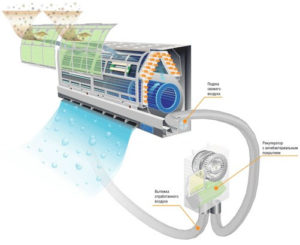
Modular system
Allows you to retrofit an existing air conditioner with a recuperator with an air duct. Structurally, the device is a separate external unit with small duct tubes. It is installed next to the air conditioner. In principle, this device resembles a small hood. Due to the fact that the system has limited air exchange capabilities (up to 20 cubic meters per hour), it has practically disappeared from the market.
According to SNiP 41-01-2003 "Heating, Ventilation and Air Conditioning", the minimum outdoor air consumption in the room is calculated on the basis that one person (depending on the ventilation system) accounts for 30 to 60 cubic meters. m. of air per hour.
Modification of the outdoor unit of the air conditioner
Modification of the external block of an existing air conditioner is the most optimal option to provide the required amount of supply air to the room. It provides for the placement of ventilation and cooling units in the case of an external device. Air supply is carried out through the indoor unit of the air conditioner, which is connected with the air duct to the ventilation module. At the same time, the modified air conditioner provides its supply in an amount of up to 32 cubic meters. per hour, which also does not fully comply with the requirements of the current regulatory documents. The price of such units is at least 140 thousand rubles, which significantly limits their use in everyday life.
Among air conditioners with mixed air, the most efficient duct systems, in which the volume of fresh air flow takes up to 25% of the total. However, these air conditioners are large and complex installation system, so they are rarely installed in apartments.
Split systems with supply ventilation function
Conventional household air conditioners are unable to provide fresh air to living quarters with a disturbed natural ventilation system. Experts believe that one of the most popular ways to solve the problem is the use of split systems that are capable of operating in the supply ventilation mode. Compared to conventional or modified air conditioners, such systems have the following advantages:
- high power;
- noiseless operation;
- high performance;
- the presence of a variety of built-in devices;
- remote control.
In addition, a split system with fresh air supply has the ability not only to cool, but also to heat the room, which makes it possible to use it in the cold season.

Often multi-room apartments and private houses are equipped with multi-split systems. They are used in cases where it is undesirable to install several outdoor units that can ruin the facade of any house. The structure of such systems includes 1 remote and from 2 to 4 indoor units. However, multisplit systems have a number of significant drawbacks, due to which they have not become widespread:
- complex installation;
- low reliability;
- insufficient performance;
- operation of the entire system in one mode, which is the same for all units (either heating or cooling).
To provide full ventilation of the premises, replacing the exhaust air with fresh air, only supply systems are capable, which by the principle of operation are similar to conventional split systems, but differ somewhat from them in design and installation method. They are built on the basis of recirculating channel air conditioners and are capable of supplying up to 160 cubic meters to the premises. m. of air per hour.
The device and principle of operation of a recirculating channel air conditioner
Structurally, a recirculating channel air conditioner with outdoor air intake consists of two blocks - external and internal.
The external block contains the main and auxiliary units and mechanisms: a condenser heat exchanger with a fan, a compressor, an automation system, measuring sensors, etc. It is installed on one of the outer walls of the building or in other convenient places, if possible protected from sunlight.
The indoor unit contains a minimum set of components: an evaporator heat exchanger and a fan blowing it, a temperature sensor, an air purification filter, etc. As a rule, it is built into a suspended ceiling, due to the need to supply air ducts to the unit.
A duct air conditioner with air ventilation operates as follows: air from one or several rooms is sucked in by the fan of the indoor unit and is fed through the air ducts to the condenser heat exchanger of the outdoor unit. Then it comes back through the air ducts. The main job of such an air conditioner is to process recirculated air coming from the premises, however, many models provide for the function of adding fresh air from the street. In this case, the volume of the latter is about 30% of the total air flow.
However, the duct air conditioner with air supply is also not able to fully provide oxygen supply to the premises. This is due to the fact that according to the current regulations, the air temperature should be within 14… 16 ° С.
To heat the supply streams in the cold season, use a special heater, an air heater, which is part of the channel split systems with the supply ventilation function.
Duct split system with supply ventilation function
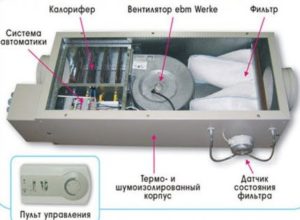
Structurally, a split system with supply ventilation consists of:
- indoor unit, which includes a fan, a heat exchanger with a fan, a filter and a control module; an additional heater is connected to the unit, made in a separate housing;
- the outdoor unit, which houses the mixing chamber, compressor with air condenser fan, heat pump and microprocessor control module.
The outdoor unit is located on the street. It can also be installed indoors, but for this the unit must be equipped with a centrifugal fan. The external and internal blocks are connected to each other by a thin freon pipeline. The indoor unit is installed behind a false ceiling or in a special box.
During operation, outside air enters the mixing chamber through a thermally insulated duct and mixes there with the air coming from the room. Then the air mixture passes through the filter and is supplied to the indoor unit, where it is processed according to a given program (heating, cooling, etc.) and supplied to the premises.
A microprocessor control module controls the operation of the entire system, which maintains a comfortable temperature in the premises throughout the year:
- In the summer, it provides the necessary cooling.
- In spring and autumn he heats up air masses using a heat pump.
- In the cold season, when the thermometer drops below 0 ° C, the heater turns on. At the same time, the control module provides smooth regulation of its power, which allows maintaining the set temperature in the room.
Advantages of ducted split systems with supply ventilation
Modern duct split systems with supply ventilation function are developed on the basis of unique engineering solutions and have significant advantages in comparison with other systems:
- effective filtration, which is ensured through the use of reusable high quality filters;
- fresh air supply at any time of the year;
- simultaneous operation of air conditioning and ventilation systems;
- silent operation of the channel unit made with the use of sound and vibration absorbing materials;
- microprocessor control, with the help of which the set temperature is maintained in the room.
An air conditioner with mixed air and a ducted split system with a supply ventilation function are most often installed in modern residential premises with sealed plastic windows, as well as where special requirements are imposed on the composition of air and ventilation. However, the complexity of ensuring the synchronous operation of air conditioning and supply ventilation systems requires the involvement of specialists with experience in carrying out such work in their installation and installation. The participation of professionals in the selection of rather complex and expensive equipment will not be superfluous.

